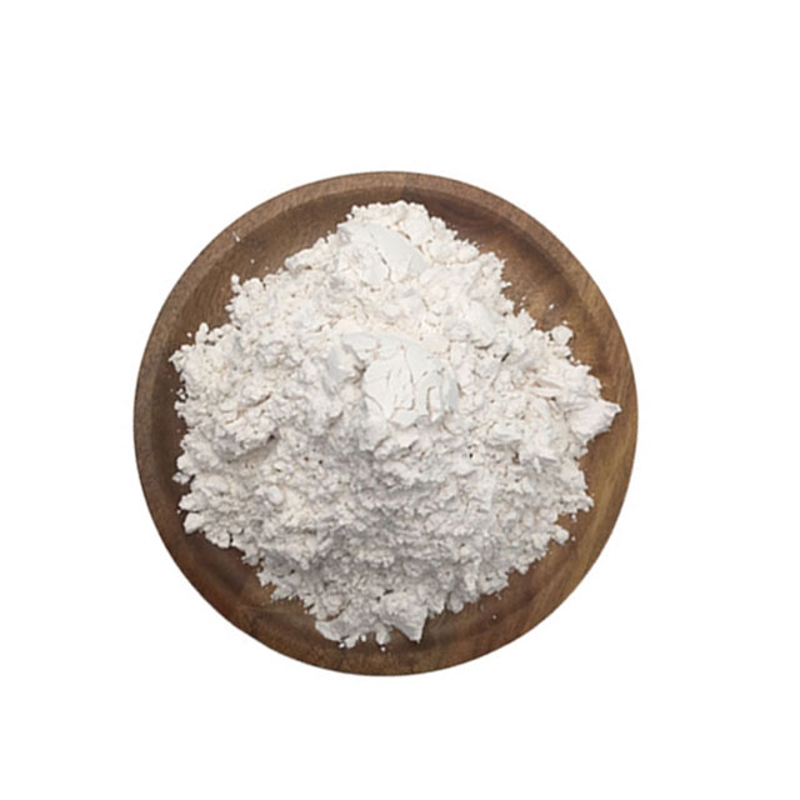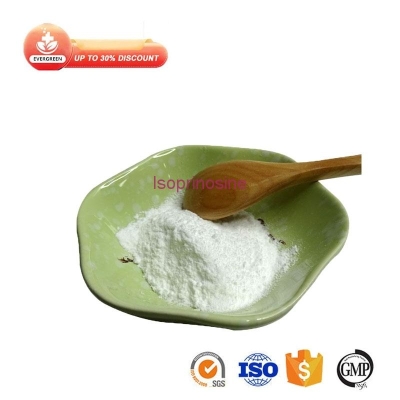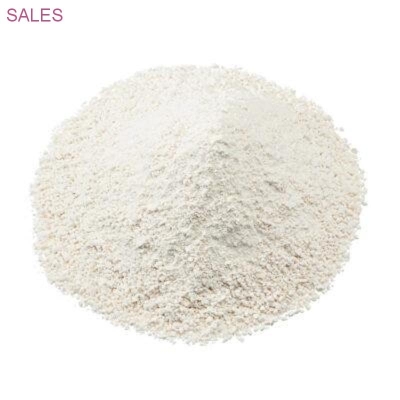-
Categories
-
Pharmaceutical Intermediates
-
Active Pharmaceutical Ingredients
-
Food Additives
- Industrial Coatings
- Agrochemicals
- Dyes and Pigments
- Surfactant
- Flavors and Fragrances
- Chemical Reagents
- Catalyst and Auxiliary
- Natural Products
- Inorganic Chemistry
-
Organic Chemistry
-
Biochemical Engineering
- Analytical Chemistry
- Cosmetic Ingredient
-
Pharmaceutical Intermediates
Promotion
ECHEMI Mall
Wholesale
Weekly Price
Exhibition
News
-
Trade Service
December 31, 2020 // --- Human immunodeficiency virus( HIV), or AIDS (AIDS, access to immunodeficiency syndrome) virus, is a virus that causes deficiencies in the human immune system.
1983, HIV was first detected in the United States.
it is a lentivirus that infects cells of the human immune system and is a type of retrovirus.
HIV causes diseases to spread throughout the body and eventually AIDS by destroying the body's T lymphocytes, thereby blocking the cellular and body fluid immune processes.
hiv mutation is extremely rapid, it is difficult to produce specific vaccines, so far there is no effective treatment, a great threat to human health.
the AIDS epidemic has claimed more than 34 million lives since the 1980s.
, according to the World Health Organization (WHO), an estimated 36.9 million people worldwide were infected with HIV in 2017, of whom only 59 percent received antiretroviral therapy (ART).
HIV remains by far one of the world's largest public health challenges, there is an urgent need to delve into the function of HIV to help researchers develop new treatments that can effectively fight the disease.
HIV-infected people need to take ART every day or even for life to stop the virus from replicating in large numbers to damage their immune systems.
art has been shown to be effective in suppressing the onset of AIDS, these drugs are expensive, time-consuming and have serious side effects.
urgent need to find a cure for HIV infection.
so far, only one "Berlin patient" , Timothy Ray Brown, has been reported around the world who is thought to have completely cured HIV.
In 2007, brown became the first person in the world to be "cured" of HIV after receiving a CCR5/CCR5 32 genotype hematopoietic stem cell transplant to treat leukemia in a German hospital.
In March 2019, a male patient known as "London Patient" who had received a bone marrow transplant from an HIV resistance patient showed no signs of HIV infection for nearly 19 months, and could become the second known patient in the world to have successfully removed HIV.
in the coming 2020s, scientists have made significant progress in hiv library, pathogenic mechanisms, testing and treatment, so let's look at the major discoveries made in this field during the year.
1.Nat Commun: Using the AAV9-CRISPR-Cas9 gene editing is expected to remove HIV DNAdoi from the DNA of infected cells: 10.1038/s41467-020-19821-7 Ape immunodeficiency virus (SIV) is a virus closely related to human immunodeficiency virus (HIV).
in a new study, researchers from research institutions such as the Lewis-Katz School of Medicine at Tamp University in the United States and Duran University took an important step forward in HIV research: they successfully removed SIV from the genomes of non-human primates.
breakthrough brings them closer than ever to developing a cure for HIV infection in humans.
study was recently published in the journal Nature Communications under the title "CRISPR base editing of sIV proviral DNA in ART treated non-human primates".
, map, and validate CRISPR-Cas9 constructs that target pre-SIV viral DNA in an introphy.
Nature Communications, 2020, doi:10.1038/s41467-020-19821-7。
"For the first time, we found that a single injection of our CRISPR gene-edited construct, carried by adeno-related viruses (AAVs), can remove the SIV genome from infected cells in rhesus monkeys," said Co-author Dr. Kamel Khalili, co-author of the paper and director of the Center for Integrated NeuroNEIS at the Lewis-Katz School of Medicine at The University of Tamp.
"2.Lancet: Long-acting Cabotwe-Lippivirin treatment programme for HIV-infected people doi:10.1016/S0140-6 736 (20) 32666-0 In a previous Phase III ATLAS clinical study, cabotwe-Lippivirin intramuscular injections every 4 weeks were as effective as oral antiviral drugs.
in Phase II clinical and model studies, Cabotwe-Lipivirin therapy, which is available every 8 weeks, also had better results.
researchers recently compared the anti-HIV-1 effects of kabotwe-Lipivirin treatment every 8 weeks vs 4 weeks.
ATLAS-2M study was conducted in 13 countries, for open, IIIb, non-inferior studies, HIV-1 infected patients received 600mg cabotwe combined 900mg lipivellin or 400mg cabotwe combined 600mg lipivellin every 8 weeks.
48 weeks, the proportion of patients with more than 50 copies of HIV-1 RNA per milliliter of serum, with a non-inferiority boundary of 4%.
1,045 people living with HIV were included in the study, including 522 in the 8-week treatment group and 523 in the 4-week treatment group, of whom 391 were from the ATLAS study (37 percent).
42 years old, 27 percent were women and 73 percent were white.
results showed that the effect of The treatment of Cabotway Unilpirin every 8 weeks was comparable to that of 1 treatment every 4 weeks, with 2% and 1% of patients with more than 50 copies of HIV-1 RNA per milliliter of serum.
8 patients (2%) in the 8-week treatment group and 2 patients in the 4-week treatment group (-lt;1%) confirmed the failure of virological treatment.
safety was similar between groups, with 81% of patients reporting adverse reactions and deaths caused by non-treatment.
For people living with HIV-1, the effect of carbotwethy-unileverin treatment is comparable to that of 1 every 4 weeks for people living with HIV-1, and the study supported a long-acting kabotwe-Lippivirin treatment once every 2 months for HIV-1 infections.
3.ScienceDaily: Great progress! In a new study, researchers from the University of Utah School of Medicine and the University of Virginia recreated the first steps of HIV (human immunodeficiency virus) infection, commonly known as AIDS, in a new study that provided the basis for the development of HIV-targeted drugs.
this allows people to get a closer look at HIV and determine the basic ingredients needed for the virus to replicate within the human host body.
study was published in the October 9, 2020 issue of the journal Science under the title "Reconstitution and visualization of HIV-1 capsid-dependent replication and integration in vitro."
in-body reconstruction and visualization to observe the replication and integration of HIV-1 shell dependencies.
images from Science, 2020, doi:10.1126/science.abc8420.
the virus's appearance is simple in terms of all the risks of HIV.
HIV is similar to a round ice cream cone whose shell encapsulates its genetic material.
, it had been thought that the main purpose of the shell, called capsid, was to protect its precious cargo, the genetic material mentioned earlier.
, the new study shows that HIV can also play an active role in infection.
the initial steps of infection in a test tube, allowing the researchers to manipulate HIV precisely in ways previously impossible.
found that when they used genetic and bio-chemical methods to destabilize HIV shells, the virus could not effectively replicate its genetic material.
is the first direct proof that HIV shells not only act as packaging, but are also an important part of the HIV infection process itself.
4.Nature paper interpretation: significant progress! Using the quantum properties of nano-diamond for paper transverse flow testing, sensitivity can be increased by 100,000 times doi:10.1038/s41586-020-2917- In a new study, researchers from University College London and Oxford University found that nanodiamond's quantum sensing capabilities could be used to improve the sensitivity of paper-based diagnostic tests, potentially allowing earlier detection of diseases such as HIV infection.
study was published in the November 26, 2020 issue of the Journal of Nature under the title "Spin-enhanced nanodiamond biosensing for ultrasensitive diagnostics".
images from Nature, 2020, doi:10.1038/s41586-020-2917-1.
the horizontal flow test based on the test strip works in the same way as the pregnancy test, soaking the test strip in a liquid sample, with changes in color or fluorescent signals indicating positive results and detecting viral proteins or DNA.
They are widely used to detect viruses ranging from HIV to SARS-CoV-2 (current horizontal flow tests for COVID-19 are currently being piloted across England) and can provide rapid diagnosis because test results do not have to be processed in the laboratory.
McKendry team used the quantum properties of defective nano-diamonds.
defects in the diamond height-rule structure produce so-called nitrogen-vacancy (NV) centers.
many potential applications in the NV center, from fluorescent biomarkers for ultra-sensitive imaging to information processing quantum bits in quantum computing.
NV center can emit bright fluorescence to produce signals indicating the presence of antigens or other target molecules.
past, fluorescence markers have been limited by background fluorescence from samples or test strips, making it difficult to detect low concentrations of viral proteins or DNA.
However, the quantum properties of fluorescent nano-diamonds allow their light emission to be selectively modulation, which means that the light signal can be fixed at a set frequency using the microwave field and can be effectively separated from background fluorescence, thus addressing this limitation.
these optical results show that the sensitivity of this nano-diamond technology is increased by up to five orders of magnitude (100,000 times) compared to gold nanoparticles (i.e. a lower number of nanoparticles are required to produce detectable signals).
mcKendry team was able to detect HIV RNA at a single molecule level in a model sample by adding a thermostatic amplification step that multiplied an RNA copy in as little as 10 minutes.
5.PNAS: There's a play in curing HIV infection! An antibiotic molecule that allows the immune system to kill HIV-infected human cells doi:10.1073/pnas.2008615117 In a new study, Mark Painter, Dr. Kathleen Collins of the University of Michigan School of Medicine, and colleagues worked together to find a weapon to kill HIV by targeting a protein called Nef.
study was recently published in the journal PNAS under the title "Concanamycin A counteracts HIV-1 Nef to enhance immune clearance of infected primary cells by cytoxic T lymphocytes".
from PNAS, 2020, doi:10.1073/pnas.2008615117.
HIV uses Nef to evade the body's immune system.
the researchers determined that a type of pleicomacrolide called concanamycin A inhibits Nef at a much lower concentration than is required to inhibit lysosomes.
Painter said, "As a leading compound in drug development, it's quite exciting because we can use very low doses so that nef is inhibited without short-term toxicity to cells."
"In a proof-of-concept experiment, they treated HIV-infected cells expressing Nef with concanamycin A and found that cytotoxic T-cells were able to remove HIV-infected T-cells.
6.Nature: Uncovering the characteristics of the special HIV library in the body of the HIV elite controller! Doi:10.1038/s41586-020-2651-8 In a recent study published in the international journal Nature, scientists from massachusetts General Hospital and other institutions successfully studied 64 elite HIV controllers







